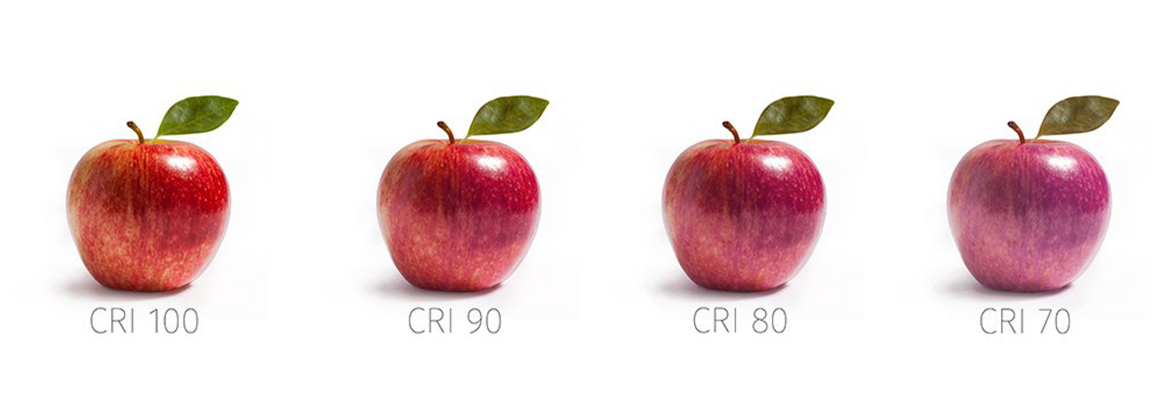Understanding the Fundamentals of Colour Rendering
September 2021
DW Windsor operates internationally. For the best experience in your region, please select the region most applicable to you.
September 2021

Colour rendering measures how accurately artificial light shows the colour of illuminated objects when compared to a reference source; it is a crucial but often misunderstood aspect of any lighting installation.
There are several methods to measure colour rendering, including TM-30 and the Colour Quality Scale (CQS) amongst others, however the most commonly used internationally recognised system is the Colour Rendering Index (CRI) – not to be confused with colour temperature (CCT) which indicates how warm or cool the light is.
Expressed as a rating from -60 to +100, a lower CRI value represents a poor colour rendering whereas a higher value will achieve a better colour rendition. Generally speaking, a CRI of 80 or above is considered good, while a CRI of 90 or more is thought to be excellent. Objects with a high CRI light source can be expected to look very similar to how they would appear in daylight. This is therefore the most desirable option for museums and high-quality retail outlets, where the display of certain items is particularly pertinent.

CRI is based on a set of 15 test colours which are distributed evenly across the range of visible colours. The colour rendering of each of these test colours is determined against a reference source, such as sunlight or an incandescent lamp which has a CRI of 100.
In comparison, typical LEDs have a CRI of around 80. The more that a light source diverges in terms of colour rendition, the lower the CRI will be. Listed in the adjacent table are a few examples of typical CRI values for different light sources.
The simple answer is yes! CRI wasn’t so important when incandescent light bulbs were the most popular choice for consumers. However, as time moves on, incandescent lights have started to disappear from the lighting scene.
| Low Pressure Sodium | <0 CRI |
| High Pressure Sodium | 20-25 CRI |
| Mercury | 50 CRI |
| Fluorescent | 50-90 CRI |
| Metal Halide | 80-85 CRI |
| LED | 65-95 CRI |
| Incandescent | 100 CRI |
| Sunlight | 100 CRI |
This is in part due to the rise of LED lighting which has quickly become the most popular choice for lighting homes owing to its superior energy efficiency and longer lifespan. CRI has since become an important consideration across multiple applications. In the workplace, it creates a more comfortable environment to work in, while in retail, it increases the perception of the product’s quality.
At Pulsar we can make lights at up to 95 CRI using some of the best colour rendering LEDs available. Combining advanced multi-channel LED technology and precision optics, our new LuxEOS range has been designed to deliver exceptional quality of light and performance, whilst offering colour rendering of more than 90 CRI.
Perfectly suited for a wide range of exterior applications – from floodlighting to distance projection – LuxEOS has been engineered to Pulsar’s exacting standards and constructed to withstand the toughest environments. Available in multiple sizes and with a choice of colour-changing LED sources, including RGBW, RGBA and Tunable White, LuxEOS offers a flexible architectural lighting solution like no other.
Our experienced design and engineering teams are on hand to provide bespoke support throughout the product specification and lighting design phases of any project.
Contact Us